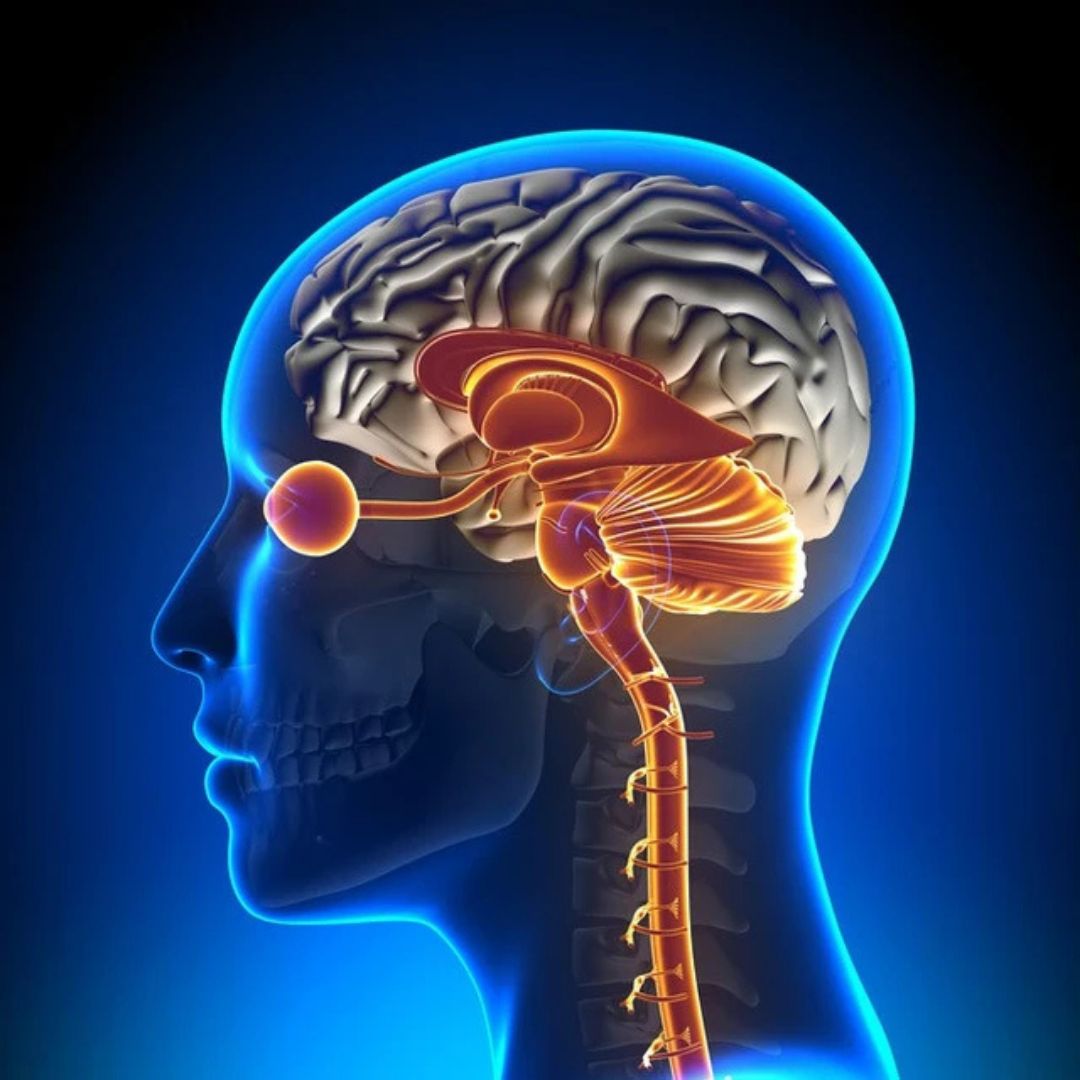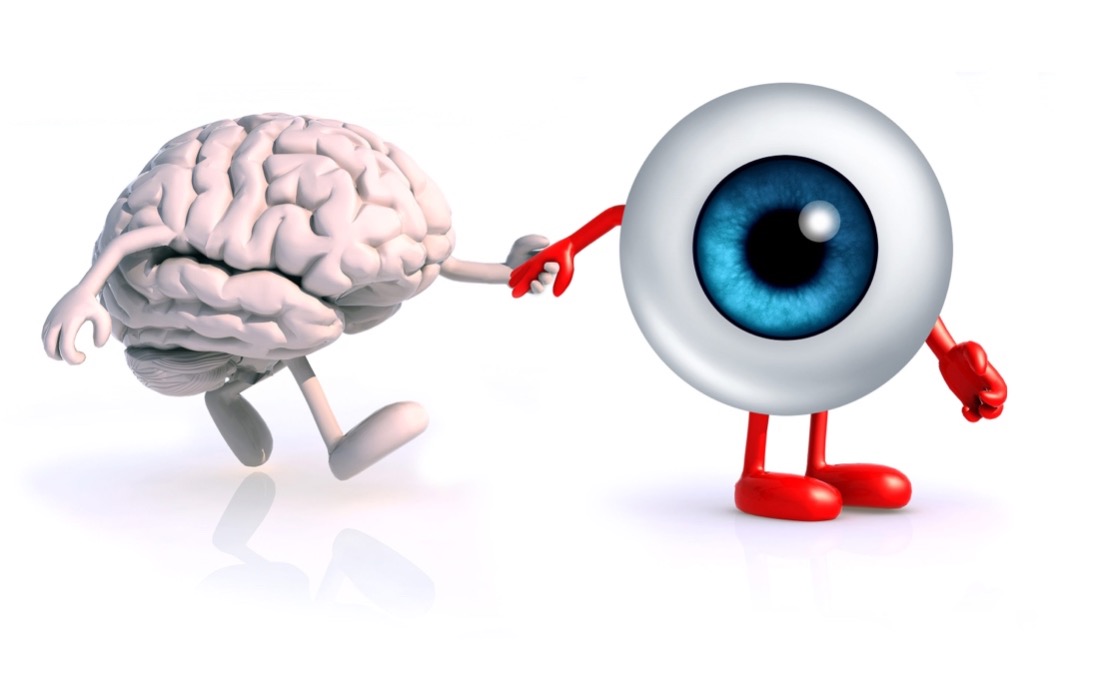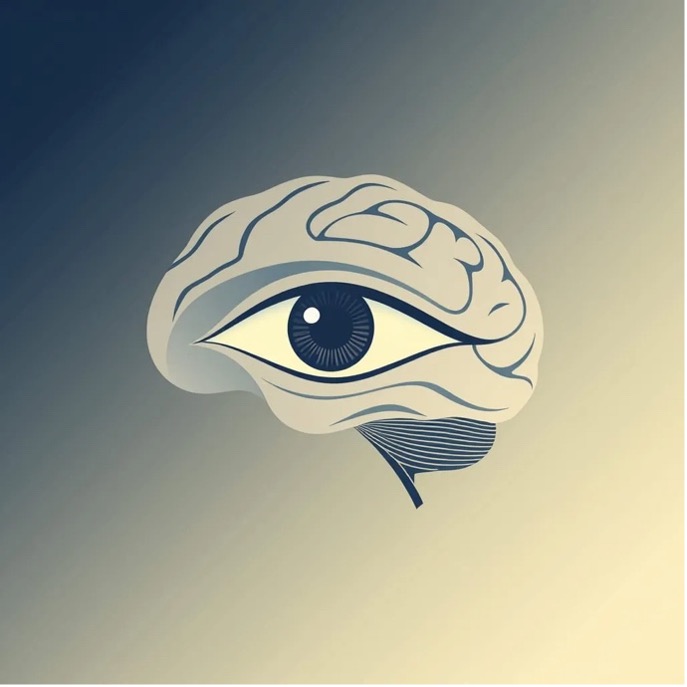
The Vision-Brain Connection
Our virtual reality platform provides a nervous system training method via visual motor control.
This approach helps rebalance your brain’s connections simply by performing specific exercises that engage your eye movements. Think of it as micro-gymnastics for the central nervous system, recalibrating neural circuits through a series of progressive exercises.
This innovative method is based on a key principle: the profound vision-brain connection.
In fact, a dysfunction in the nervous system often leads to a disturbance in eye movements.
The eye, as an extension of the brain, becomes a powerful tool to retrain the nervous system through visual motor training.

The Eye: A Direct Gateway to the Central Nervous System
Vision is our most dominant and highly developed sense
Here are key insights to understand the eye-brain connection:
- Energy and Information Processing
- - 60% of the sensory information received by the brain is visual in origin.
- - The eye alone consumes 85% of the energy used by the five senses.
- Vision: A Creation of the Brain
- - What we see is not a direct reproduction of reality, but an interpretation constructed by the brain. It is the brain that truly “sees.”
- - Around 30% of the cerebral cortex is involved in processing and interpreting visual information.
- The Eye and the Brain: An Integrated System
- The optic nerve transmits visual signals.
- The thalamus (lateral geniculate body) filters and organizes this information.
- The primary visual cortex and associative areas decode and interpret the images.
- Other structures like the tectum, hypothalamus, and amygdala , integrate vision with motor, emotional, and physiological functions.
- Vision: A Dominant Sense
Vision is a complex system that connects the eye to several brain structures.
The eye is an extension of the brain — a part of the brain that is externalized.
Compared to other senses, vision is ultra-dominant in humans, thanks to its vast number of receptors and the large portion of the cerebral cortex dedicated to visual processing.
The Eye-Brain Interaction and Its Consequences
The eyes are far more than passive sensors – they're in constant motion to optimize how the brain interprets visual scenes. These eye movements are controlled by complex neural networks that interact closely with the rest of the brain.
This interaction works both ways :
- Brain activity influences eye movements: For example, our emotional or cognitive state directly influence eye movements, altering their speed and direction.
- Eye movements influence brain activity: Techniques such as EMDR (Eye Movement Desensitization and Reprocessing) use eye movements to regulate brain activity and treat conditions like post-traumatic stress or anxiety.
Conclusion
This interdependence means that central nervous system dysregulation (from stress, trauma, etc.) can disrupt visual motor function. Conversely, targeted eye movements (like those used in EMDR therapy) can help recalibrate brain activity and restore nervous system balance.